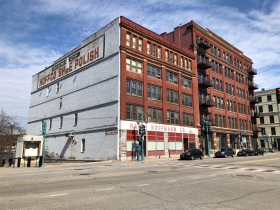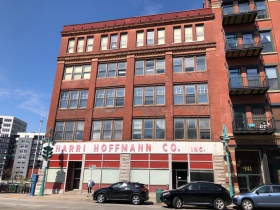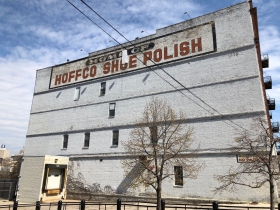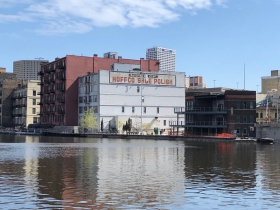Harri Hoffmann Building Worth $3.3 Million
Owner evaded concentration camp, immigrated here to create Third Ward shoe polish factory.
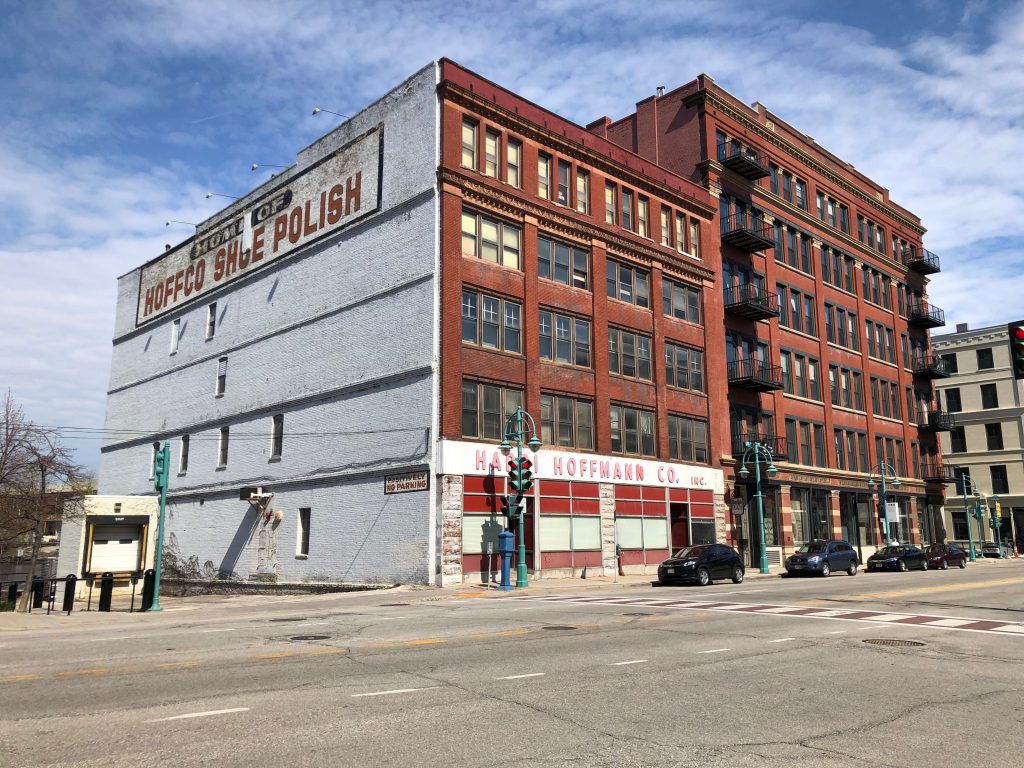
125-129 N. Water St. Assessed Valuation: $1,708,600. Recent Sale: $3,300,000. Photo by Jeramey Jannene.
In November, 1962 Harri Hoffmann (1911-1999) moved his shoe polish business to this five-story, riverfront warehouse whose address today is 125 N. Water St. It was originally built in 1892 by Crane and Barkhausen for the Joys Co., manufacturers of canvas goods like sails, tents and awnings (later known as Laacke & Joys). Hoffmann’s Third Ward neighborhood was then filled with sweatshops and small manufacturing concerns, including companies that made boots and shoes that could use his polish. Most, like this one, were in warehouse buildings built after a disastrous 1892 fire destroyed the district, already the hub of Milwaukee’s commerce. Little could Hoffman know that his shoe polish factory would eventually be the last one remaining.
With the death of the founder’s daughter Lorraine Hoffmann, at 74, on July 11th, 2017, operations wound down, and the business was sold. This month the final bits and pieces (mostly small paperboard boxes) were hauled from the Historic Third Ward‘s final factory. It was announced this month that the building, with an assessment of $1,708,600, had been sold for $3.3 million to Wimmer Communities, a real estate development and management company based in Hales Corners.
In 2018 the Wimmers spent $2.7 million for a former fire house immediately to the south to be used as a three-unit “family retreat” (See Plenty of Horne: Third Ward Fire House Conversion Approved). It is anticipated that Hoffmann building is to be converted to residential use on the upper floors, with retail on the first floor, although no plans have been announced.
Building Was New When Third Ward Fire Raged
Building permit No. 187 was issued April 1st, 1892 for this 60-foot-by-110-foot, five-story, $26,000 “store” built for A.M. and John Joys, who incorporated that year as Joys Brothers Company, manufacturers of awnings, tents, flags, yacht sails and other items. On October 28th of that year, a fire raged through the neighborhood, destroying some 470 buildings. The fire did not spare this structure, which was likely still under construction at the time. On June 12, 1893 the Joys Brothers received a permit “to repair bldg recently damaged by fire, to make it the same as it was before the fire.” The work was estimated at $6,500, the cost most likely covered by insurance.
In 1910 the Joys Brothers ran their operation from the north half of the building, while the south end was occupied by the Standard Bedding Co., a mattress manufacturing firm. The first floor held a store, office and shipping department. The second floor was devoted to “stuffing and sewing.” The third floor held the “cotton pickers.” The fourth floor was for “floss picking,” while “excelsior, wood + feather steaming” shared space with a “Garnett Room” on the top floor. (A “Garnett Room” was used to reduce waste material to its fibrous state for reuse in textile manufacturing.)
What exotic job descriptions there were in the Third Ward those days!
Diverse Manufacturing Center
In 1894, the Joys Brothers were surrounded by an array of diverse businesses within just a few blocks. They included the American Biscuit & Manufacturing Co.; the new Bradley-Metcalf Co. Shoe Factory, which was located immediately to the north; the Eagle Lye Works; the Johnston Bros. Cracker Factory; Milwaukee Brass Manufacturing Co.; Milwaukee Gas Stove Co.; Milwaukee Mirror & Art Glass Works; Milwaukee Parlor Frame Co.; National Distilling Co.; Reliance Wire & Iron Works; Telegram Cycle Manufacturing Co.; Toepfer & Sons, Iron Works; Union Paint & Oil Co.’s Warehouse; Willmann Bros., Lithographers and Ziegler Company, Confectioners.
Everything from A to Z; everything from lye to liquor, and a bicycle to carry it home.
One notable absence was housing for the floss pickers, sail makers and feather steamers who toiled in the neighborhood’s factories. But as the old businesses moved out, their buildings were eventually — over the course of decades — converted to the new uses of a postindustrial economy, such as loft apartments with industrial features. The phenomenon dates to the late 1980s, at which time many of the neighborhood buildings had been vacant for decades, their fates uncertain. Today the Historic Third Ward houses an estimated population of 3,000 residents (according to the Historic Third Ward Association) in condominiums and apartments, with more likely to come, quite possibly in this building. Most manufacturing consists of residents assembling furniture from their neighborhood retail merchants at Restoration Hardware or Design Within Reach.
The Hoffco Years
Harri and Hilda Hoffmann, natives of Aurich, Germany, endured Kristilnacht, November 8-9, 1938, when Nazis besieged Jewish communities on a nationwide basis in an evening of “Broken Glass” and terror. Hoffmann was on a train to a concentration camp when he feigned illness and was able to escape. The Hoffmanns made their way to Milwaukee, and their eventual fortune.
Hoffmann sold his first bottle of White Stain Hoffco Shoe Polish on April 6th, 1951. This was during the Baby Boom, when, due to an inexplicable fashion craze, even boys were expected to wear white shoes, the trauma of which endures for this writer. Soon the superiority of the product guaranteed it a place in America’s homes, along with Hoffco’s other polishes. For a decade, the polish was made at home, in the family kitchen. Baby Lorraine was the first child to have her shoes whitened by the product.
New Storefront and Signs
After buying the Joys Brothers Co. building in 1962, Hoffmann set about remodeling it for his purposes. He received a permit on December 3rd, 1962 to “Provide new aluminum and glass front for existing bldg. Erect interior partitions to provide offices and one additional toilet room.” Soon the building, with its water-powered elevator, was humming with activity. Hoffmann ordered a painted sign reading “Home of Hoffco Shoe Polish,” for the south wall. In early 1963 he paid 20th Century Signs $210 to spell out “HARRI HOFFMANN CO.” in two-foot-tall red plastic letters, spreading it out over 40 feet of the building’s frontage, along with a diminuitive “INC” in one-foot letters.
Hoffmann’s Lincoln Continental was usually parked outside the building, where he could be seen in his storefront office running his shoe polish business well into his eighties. Lorraine, his only child, had moved to Chicago, where she was a Vice President for Merrill Lynch. She returned to Milwaukee upon her father’s death in 1999, and ran the business until her own death in 2017, commuting from her Lake Drive home. Like her father, Hoffmann supported a number of charities during her life and in her will. She was a member of the Museum of Beer and Brewing, raising a pint at many of the group’s gatherings. Her will includes support for the Wisconsin Institute of Torah Study Endowment Fund, the Ovation Jewish Home, Lake Park Synagogue and Lawrence university and other individuals and organizations. Her work was her life and her employees were her family, which is why one factory alone survived in the Historic Third Ward, after all others had perished. This is truly the end of an era.
No Direct Riverwalk Connection
The Hoffmanns did not care much for the Riverwalk. The building and a parking lot the family owned on E. Erie St. are, unlike its neighbors, not directly connected with the Riverwalk. The Hoffco building is screened by a wooden fence. Another Riverwalk holdout upstream was the Renaissance Book Store, now demolished.
Photo Gallery
The Rundown
- Name of Property: Harri Hoffmann Building
- Address: 125 N. Water St.
- Assessed Valuation: The irregularly shaped riverfront lot, the size of which could not be easily determined, but is around 15,000 square feet, is assessed at $718,500 and the improvements are valued at $990,100 for a total assessed valuation of $1,708,600. Property recently sold for $3,300,000
- Taxes: 2018: $47,392.50; Paid In Full
- Owner: Harri Hoffmann Co., Inc. Recently sold for $3.3 million to Wimmer Communities
- Type: Manufacturing. Property, now vacant, was last factory to operate in the Third Ward, where such use was once the norm
- Architect: Crane & Barkhausen
- Year Built: 1892
- Neighborhood: Historic Third Ward
- Aldermanic District: 4th; Robert Bauman
- Walk Score: 95 out of 100 “Walker’s Paradise”
- Transit Score: 67 out of 100 “Good Transit” Streetcar on the block
- How Milwaukee is it? It is about 0.70 miles south of Milwaukee City Hall
- 1894 Map Vol.1 Sheet oo4
- 1910 Map Vol.1 Sheet 005
If you think stories like this are important, become a member of Urban Milwaukee and help support real independent journalism. Plus you get some cool added benefits, all detailed here.
Political Contributions Tracker
Displaying political contributions between people mentioned in this story. Learn more.
- November 18, 2015 - Robert Bauman received $100 from Lorraine Hoffmann
- September 12, 2014 - Robert Bauman received $100 from Lorraine Hoffmann
What's It Worth?
-
Fred Vogel, Jr. Building Has Quite a History
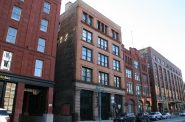 Jul 20th, 2024 by Michael Horne
Jul 20th, 2024 by Michael Horne
-
Milwaukee Yacht Club Worth $2.28 Million
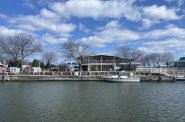 Mar 27th, 2024 by Michael Horne
Mar 27th, 2024 by Michael Horne
-
Wisconsin Club Worth $5.1 Million
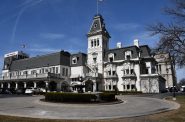 Mar 17th, 2024 by Michael Horne
Mar 17th, 2024 by Michael Horne


